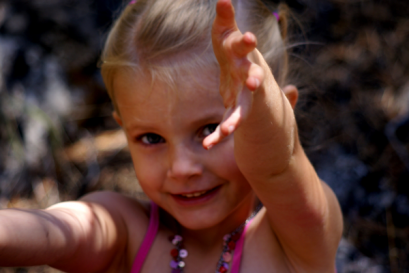THE BEST & WORST PLACES IN THE WORLD TO BE A MOTHER
from SAVETHECHILDREN.ORG
from SAVETHECHILDREN.ORG
STRAIGHT FROM SAVETHECHILDREN.ORG WEBSITE:
Save the Children's 'State of the World's Mothers Report 2010' Shows Norway Tops the List, Afghanistan Ranks Last, U.S. Falls to 28th, Behind Many Other Wealthy Nations
WESTPORT, Conn. ( May 4, 2010) — Mothers in Norway and Australia are living in the best places in the world, according to Save the Children's 11th annual "Mothers' Index", which ranks the best and worst places to be a mother. Afghanistan ranked at the bottom of the list of 160 countries, which included 43 developed nations and 117 in the developing world.
The "Mothers' Index" is highlighted in Save the Children's State of the World's Mothers 2010 report, which examines the many ways women working on the front lines of health care are helping to save the lives of mothers, newborns and young children, and makes an urgent call to increase the number of front-line health workers in the world's poorest nations.
The Index is based on an analysis of indicators of women's and children's health and well-being, and clearly illustrates that providing mothers with access to education, economic opportunities and maternal and child health care gives mothers and their children the best chance to survive and thrive.
Top 10 Best Places To Be a Mother:
Norway ranks first, followed by Australia, Iceland, Sweden, Denmark, New Zealand, Finland, the Netherlands, Belgium and Germany.
Among the worst 10 places To Be a Mother:
Afghanistan ranks last, preceded by Niger, Chad, Guinea-Bissau, Yemen, Democratic Republic of Congo, Mali, Sudan, Eritrea and Equatorial Guinea.
The United States places 28 primarily because its rate for maternal mortality – 1 in 4,800 – is one of the highest in the developed world. The U.S. also ranks behind many other wealthy nations in terms of the generosity of maternity leave policies.
Country Comparisons:
Save the Children's 'State of the World's Mothers Report 2010' Shows Norway Tops the List, Afghanistan Ranks Last, U.S. Falls to 28th, Behind Many Other Wealthy Nations
WESTPORT, Conn. ( May 4, 2010) — Mothers in Norway and Australia are living in the best places in the world, according to Save the Children's 11th annual "Mothers' Index", which ranks the best and worst places to be a mother. Afghanistan ranked at the bottom of the list of 160 countries, which included 43 developed nations and 117 in the developing world.
The "Mothers' Index" is highlighted in Save the Children's State of the World's Mothers 2010 report, which examines the many ways women working on the front lines of health care are helping to save the lives of mothers, newborns and young children, and makes an urgent call to increase the number of front-line health workers in the world's poorest nations.
The Index is based on an analysis of indicators of women's and children's health and well-being, and clearly illustrates that providing mothers with access to education, economic opportunities and maternal and child health care gives mothers and their children the best chance to survive and thrive.
Top 10 Best Places To Be a Mother:
Norway ranks first, followed by Australia, Iceland, Sweden, Denmark, New Zealand, Finland, the Netherlands, Belgium and Germany.
Among the worst 10 places To Be a Mother:
Afghanistan ranks last, preceded by Niger, Chad, Guinea-Bissau, Yemen, Democratic Republic of Congo, Mali, Sudan, Eritrea and Equatorial Guinea.
The United States places 28 primarily because its rate for maternal mortality – 1 in 4,800 – is one of the highest in the developed world. The U.S. also ranks behind many other wealthy nations in terms of the generosity of maternity leave policies.
Country Comparisons:
- Fewer than 15 percent of births are attended by skilled health personnel in Afghanistan and Chad. In Ethiopia, only 6 percent of births are attended. Skilled health personnel are present at virtually every birth in Norway.
- The risk for a woman to die of pregnancy or childbirth-related causes in Niger is 1 in 7. The risk is 1 in 8 in Afghanistan and Sierra Leone. In Bosnia and Herzegovina, Greece and Italy, the risk of maternal death is less than 1 in 25,000 and in Ireland it is less than 1 in 47,600.
- 1 child in 5 does not reach his or her fifth birthday in Angola, Chad, Democratic Republic of Congo and Somalia. In Afghanistan, child mortality rates are higher than 1 in 4. In Finland, Iceland, Luxembourg and Sweden, only 1 child in 333 dies before age 5.
- A typical female in Afghanistan, Angola, Chad, Djibouti, Eritrea and Guinea-Bissau receives less than five years of formal education. In Niger, women receive less than four years. In Australia and New Zealand, the average woman stays in school for more than 20 years.
- In Afghanistan, Jordan, Lebanon, Libyan Arab Jamahiriya, Morocco, Oman, Pakistan, Syria and Yemen, women earn 25 cents or less for every dollar men earn. Saudi Arabian and Palestinian women earn only 16 and 12 cents respectively to the male dollar. In Mongolia, women earn 87 cents for every dollar men earn and in Mozambique they earn 90 cents.

